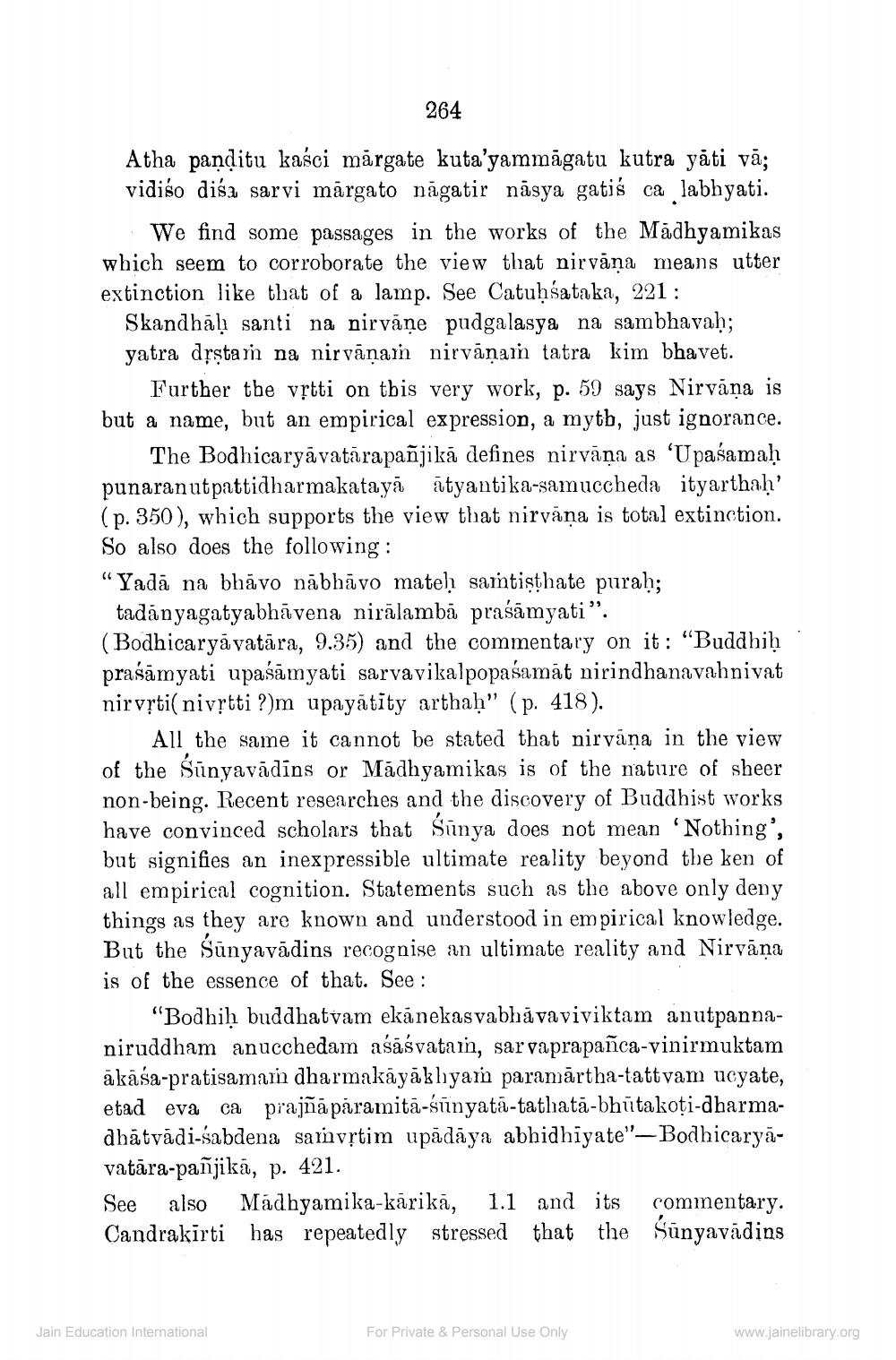________________
264
Atha panditu kaści mărgate kuta'yammāgatu kutra yāti vā; vidišo diša sarvi mārgato nāgatir nāsya gatiś ca labhyati.
We find some passages in the works of the Mädhyamikas which seem to corroborate the view that nirvāņa means utter extinction like that of a lamp. See Catuḥsataka, 221 :
Skandhah santi na nirvāṇe pudgalasya na sambhavah; yatra dịşta mn na nirvāņam nirvāņain tatra kim bhavet.
Further the vștti on this very work, p. 59 says Nirvāṇa is but a name, but an empirical expression, a myth, just ignorance.
The Bodhicaryāvatārapañjikā defines nirvāṇa as 'Upaśamaḥ punaranutpattidharmakatayā ātyantika-samuccheda ityarthah' (p. 350), which supports the view that nirvāṇa is total extinction. So also does the following: “Yadā na bhāvo nābhāvo mateh samtişthate purah;
tadanyagatyabhāvena nirālambă praśāmyati”. (Bodhicaryā vatāra, 9.35) and the commentary on it : "Buddhiḥ praśāmyati upaśāmyati sarvavikalpopašamāt nirindhanavahnivat nirvrti( nivștti ?)m upayātīty arthah” (p. 418).
All the same it cannot be stated that nirvāṇa in the view of the Sūnyavādins or Madhyamikas is of the nature of sheer non-being. Recent researches and the discovery of Buddhist works have convinced scholars that Sünya does not mean 'Nothing', but signifies an inexpressible ultimate reality beyond the ken of all empirical cognition. Statements such as the above only deny things as they are known and understood in empirical knowledge. But the Sūnyavādins recognise an ultimate reality and Nirvāņa is of the essence of that. See :
"Bodhiḥ buddhatvam ekānekasvabhāvaviviktam anutpannaniruddham anucchedam aśāśvatam, sar yaprapañca-vinirmuktam ākāśa-pratisamam dharmakāyākliyain paramārtha-tattvam ucyate, etad eva ca prajā páramitā-śūnyatā-tathatā-bhūtakoti-dharmadhătvādi-sabdena samvștim upādāya abhidhīyate"-Bodhicaryavatāra-pañjikā, p. 421. See also Madhyamika-kārikā, 1.1 and its commentary. Candrakirti has repeatedly stressed that the Sūnyavādins
Jain Education International
For Private & Personal Use Only
www.jainelibrary.org




